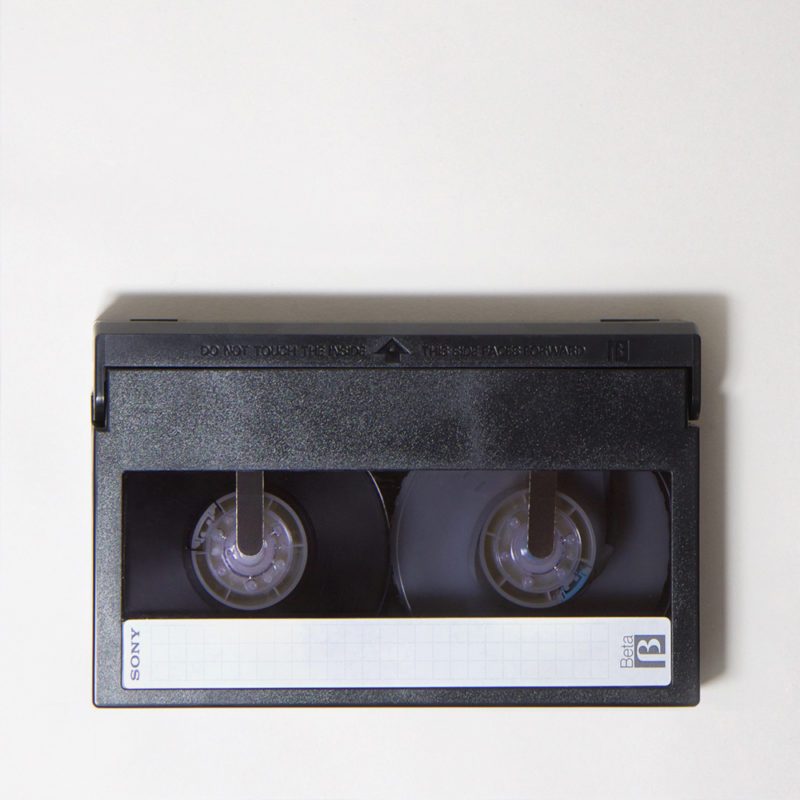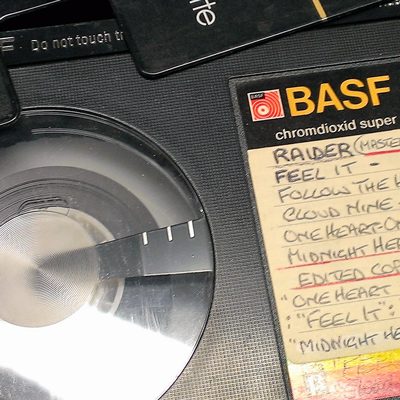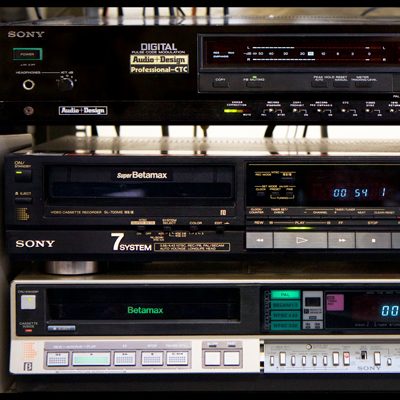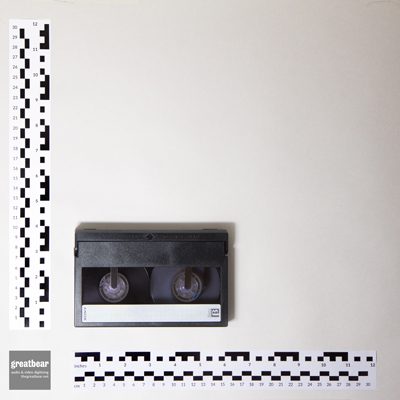introduction to PCM audio on video tape transfer
Developed in the late 1970s, PCM (pulse code modulation) digital audio harnessed the larger bandwidth of video tape technology to digitally encode an audio signal to magnetic tape. PCM digital audio was widely used for studio mastering until the introduction of Digital Audio Tape (DAT) in 1987.
At Greatbear, we carefully restore and migrate to digital files all variations of PCM audio recorded on Betamax, VHS, U-matic or other video tape. We are able to provide direct digital transfers, avoiding digital-to-analogue and analogue-to-digital conversion.
We offer a range of delivery formats for our audio transfers. Following International Association of Sound and Audiovisual Archives TC-04 guidelines, we deliver 24-bit / 96 kHz high resolution Broadcast WAV files, together with MP3 audio file or audio CD listening versions. We're happy to create any other digital audio files, according to your needs. We can also digitise to 24-bit / 192 kHz, if required.
We can provide the appropriately-sized USB delivery media for your files, or use media supplied by you, or deliver your files online. Files delivered on hard drive can be for any operating system - MacOS, Windows or GNU/Linux and filesystems (HFS+, NTFS or EXT3).
PCM digital audio recordings vary in duration and in the extent of physical tape degradation, so we always assess tapes before confirming the price of a transfer.
We offer free assessments - please contact us to discuss your project.
machines for PCM audio
Many valuable audio recordings were made on video tape either as a standard video soundtrack in mono or stereo or using the higher quality FM recording system. Having extensive racks of video machines allows us to save these recordings.
We use Audio + Design Sony PCM-701ES Professional machines for PAL / SECAM 625 recordings and the Nakamichi DMP-100 for NTSC 525 recordings, coupled with dual-standard replay Betamax, VHS and U-matic VTRs.
For PCM audio on Video8 tape we have a dedicated Sony EVS700UB Digital Audio Video machine.
direct digital transfers
In addition to supporting PAL / SECAM 625 and NTSC 525 recordings, we can also make direct digital transfers of recordings on all 3 systems, via the A+D Sony PCM-701ES Professional Adapter. This allows us to bypass the digital to analogue converter (DAC) in the 1980s Sony unit, so removing two unecessary stages of DA / AD conversion which is always preferable in recordings like these which are 'born digital'.
PCM audio on video tape format variation
| Sony PCM 1600 series recordings supported | Sony PCM F1 series recordings supported | AES digital transfer supported | analogue transfer supported | recordings on U-matic or VHS tape supported | recordings on Video8 8mm tape supported | |
|---|---|---|---|---|---|---|
| projects recorded with PAL equipment | ✗ | ✓ | ✓ | ✓ | ✓ | ✓ |
| projects recorded with NTSC equipment | ✗ | ✓ | ✓ | ✓ | ✓ | ✗ |
Scroll to the right to view full table on smaller screens.
PCM audio on video tape risks & vulnerabilities
Given that PCM audio recordings all use video tape (in particular VHS and U-matic), they are prone to the same causes of degradation as video tape, including mould.
Often problems due to degradation can be more pronounced, as back-coated, high-quality tape was preferred and these tend to suffer from issues like Sticky Shed Syndrome more often. Certain brands / tape models such as Ampex 187 and 197 are particularly susceptible to binder hydrolysis and need 'baking' before it is safe to replay them.
PCM audio on video tape history
We are now used to living in a born-digital environment, but the transition from analogue to digital technologies did not happen overnight. In the late 1970s, early digital audio recordings were made possible by a hybrid analogue/digital system. It was composed of the humble transport and recording mechanisms of the video tape machine, and a not so humble PCM (pulse code modulation) digital processor. Together they created the first two-channel stereo digital recording system.
Much of the PCM audio on video tape we transfer at the Greatbear studio is for artists and labels producing albums in the mid to late 1980s, including some incredible artists we can't disclose because we have agreed confidentiality!
Read about the history of its development in our tape blog: Early digital tape recordings on PCM/ U-matic and Betamax video tape





